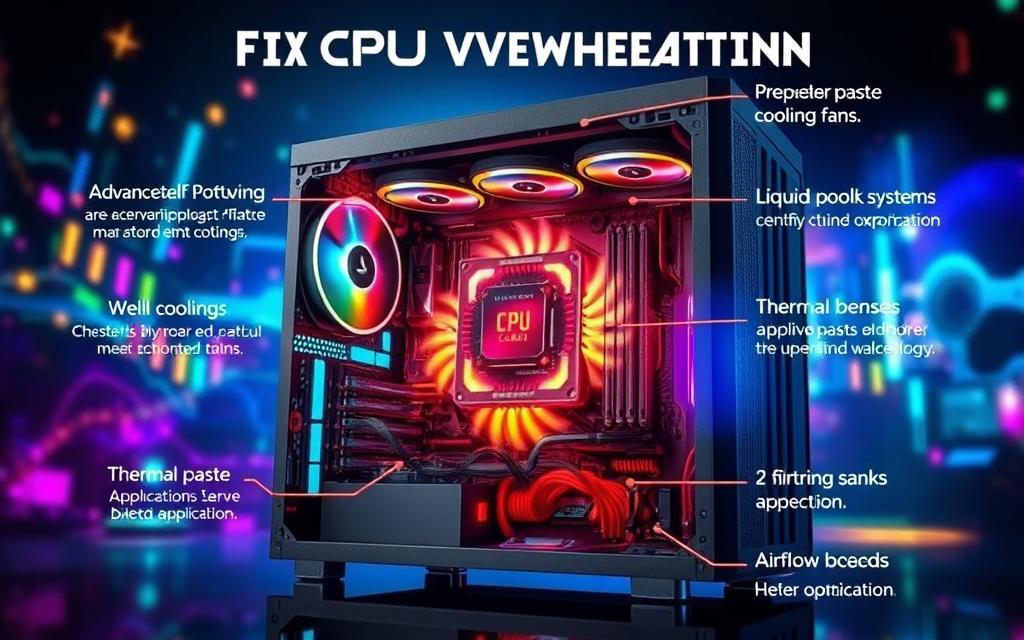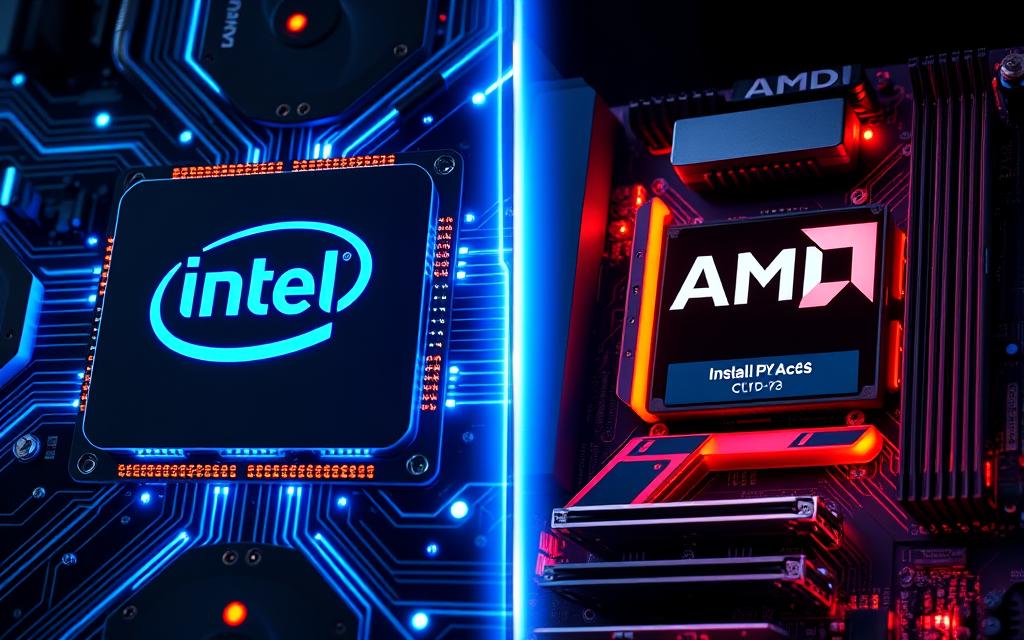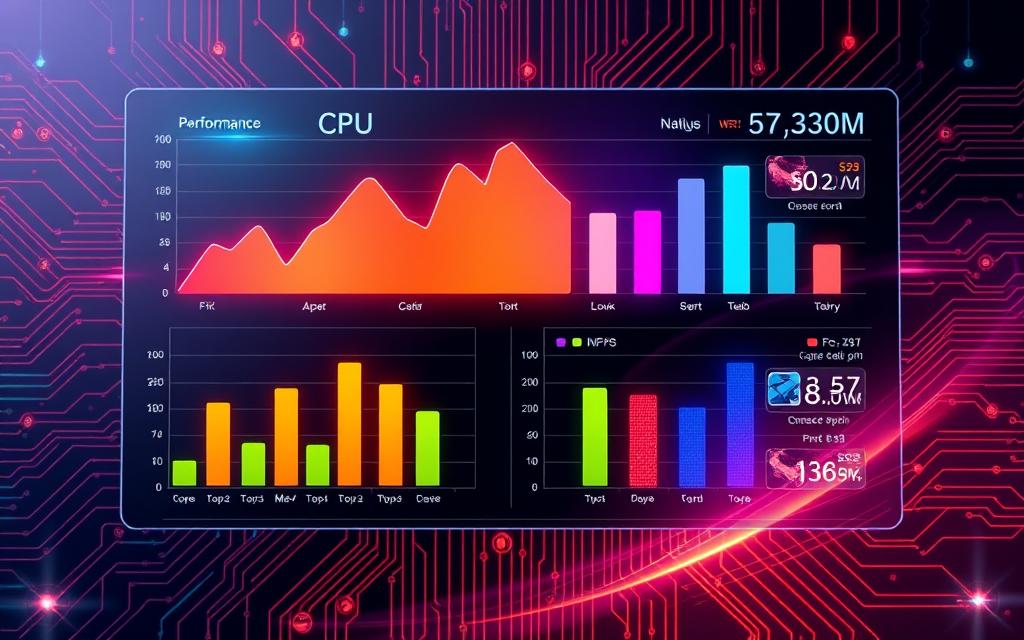Overheating is a common problem faced by many PC users, leading to significant performance issues and even permanent damage. With over 90% of overheating incidents stemming from physical factors like dust buildup, defective fans, and blocked air vents, it’s essential to understand how to effectively tackle the situation. Moreover, running too many applications simultaneously can increase the workload by 70%, causing excessive heat and reducing your computer’s efficiency.
Alongside physical causes, software-related issues account for more than 80% of overheating cases. Outdated software can lead to inefficient resource management, exacerbating the strain on your system. Furthermore, hidden malware can consume valuable resources, generating unnecessary heat. This article will provide valuable insights into fixing CPU overheating by exploring various CPU cooling solutions, regular maintenance tactics, and effective software troubleshooting steps to enhance your computer’s overall performance.
Understanding CPU Overheating
Understanding the complexities of CPU overheating begins with identifying its causes of overheating. An array of factors can contribute to this issue, affecting the overall PC performance. Addressing these concerns will help maintain optimal conditions for your computer.
Common Causes of CPU Overheating
Many elements can lead to CPU temperature issues. Here are a few common contributors:
- Dust buildup inside the computer, which obstructs airflow and fan function.
- Running multiple applications simultaneously, putting excessive strain on the CPU.
- Malfunctioning fans that fail to circulate air effectively.
- Outdated software, which might cause inefficient resource management.
- High ambient temperatures that complicate cooling efforts.
Other hidden issues could manifest from unresponsive applications and malware that consume unnecessary CPU power.
The Impact of Overheating on PC Performance
Overheating significantly impacts your computer’s functionality. Symptoms of CPU overheating include a sluggish or unstable computer, unexpected shutdowns, and even alarming noises. When temperatures rise, PC performance deteriorates, often resulting in throttling. This means your CPU throttles itself to prevent damage, leading to lag and reduced processing speeds.
Maintaining temperature levels below 80°C under load and ideally under 60°C at idle is crucial for preventing serious CPU temperature issues. Ignoring these warnings can result in hardware failure and reduced system longevity. Regular monitoring of CPU conditions is essential to ensure stable performance for both the CPU and essential components.
Effective Cooling Solutions
Choosing the right cooling solution is crucial for maintaining optimal CPU performance and temperature management. Options like air cooling and liquid cooling offer various benefits and challenges. Understanding these differences can help you make an informed decision aligned with your needs.
Air Cooling vs. Liquid Cooling
Air cooling systems typically use fans to push air over heatsinks, offering an effective, straightforward solution for most users. These systems are cost-efficient and require minimal maintenance, making them suitable for everyday use. The ideal operating temperature for most modern CPUs remains below 80°C under heavy load, while air cooling can effectively manage this if configured correctly.
On the other hand, liquid cooling provides superior heat dissipation and operates quietly. This method circulates liquid through a closed loop, often resulting in lower temperatures compared to air cooling. Installation of liquid cooling systems can be more complex, requiring careful setup and maintenance. For users involved in high-performance gaming or heavy computing tasks, liquid cooling stands out as a viable option due to its efficiency.
Using Cooling Pads for Laptops
For those using laptops, consider incorporating cooling pads into your setup. These laptop cooling solutions enhance airflow to critical components by addressing common overheating causes like poor ventilation and dust accumulation. A cooling pad aids in lowering your device’s temperature during demanding applications or gaming sessions. Frequent use of cooling pads can prevent common symptoms of overheating, including sluggish performance, loud fan noise, and unexpected shutdowns.
| Cooling Method | Advantages | Disadvantages |
|---|---|---|
| Air Cooling |
|
|
| Liquid Cooling |
|
|
Regular monitoring of CPU performance with tools like CORSAIR iCUE can help you catch overheating before it leads to permanent damage. Ultimately, whether opting for air cooling or liquid cooling, maintaining your system ensures it runs efficiently and reliably.
Regular Maintenance for Heat Management
Maintaining your computer ensures longevity and optimal performance. Regular maintenance, such as dust cleaning and ensuring proper airflow, plays a significant role in managing heat. Here are some key activities to consider for effective heat management.
Cleaning Dust and Debris
Dust accumulation can significantly impact your computer’s cooling efficiency. Regularly cleaning dust off fans and components is essential. Dust obstructs airflow and traps heat, leading to overheating. You should open your case periodically and use compressed air to blow out dust, focusing on hard-to-reach areas.
Checking Fan Functionality
Your fans work tirelessly to maintain the temperature while you use your computer. To ensure they are performing correctly, visually inspect them for motion and listen for any unusual sounds. Malfunctioning fans may need replacement or upgrades for sufficient airflow, which is vital in preventing overheating.
Improving Airflow in Your Setup
Proper airflow in your setup is critical for maintaining low temperatures. Always place your PC on a hard surface with several inches of clearance on all sides. Avoid close environments that can trap heat. For laptops, utilizing flat, cool surfaces for operation helps keep vents unblocked and ensures better cooling performance.
| Maintenance Task | Recommendation Frequency | Importance for Heat Management |
|---|---|---|
| Dust Cleaning | At least every six months | Restores cooling efficiency |
| Fan Functionality Check | Quarterly | Ensures proper airflow and cooling |
| Airflow Improvement | As needed | Prevents heat accumulation |
Incorporating these practices into your computer maintenance routine can significantly enhance performance, improve airflow, and reduce the risk of overheating. Keeping an eye on these aspects creates a healthier computing environment for your device.
Fixing CPU Overheating
Addressing CPU overheating involves a few strategic steps that significantly enhance heat management. Implementing these changes can help maintain optimal performance while protecting the longevity of your system.
Reapply Thermal Paste
Thermal paste plays a vital role in ensuring efficient heat transfer from the CPU to its heatsink. Over time, thermal paste can dry out, which reduces its effectiveness in managing temperature. By regularly reapplying thermal paste, you can improve cooling performance considerably. Follow these guidelines:
- Gently clean the old thermal paste from the CPU and heatsink.
- Apply a pea-sized amount of fresh thermal paste directly onto the CPU.
- Reattach the heatsink securely.
This straightforward maintenance can lower temperatures, especially for systems under heavy usage.
Adjusting Power Settings for Better Temperature Control
Fine-tuning your computer’s power settings is an effective method for alleviating overheating issues. By adjusting power settings, you can optimize CPU performance without compromising system stability. Consider these adjustments:
- Lower the maximum processor state in your operating system’s power settings.
- Use battery saver modes to reduce CPU workload during ordinary tasks.
- Monitor CPU temperatures using software tools like SpeedFan or HWMonitor.
These modifications allow for better temperature control while still maintaining performance levels for typical computing tasks.
Software Solutions and Troubleshooting
Tackling CPU overheating requires more than just hardware adjustments. Effective software troubleshooting can significantly help mitigate excessive heat. By focusing on specific areas, you can enhance overall performance and expand the lifespan of your computer.
Closing Unnecessary Programs
Background processes can put a heavy load on your CPU, leading to increased temperatures. It is vital to regularly review running applications through Task Manager. Identify and close unnecessary programs that consume significant resources. This straightforward step can help prevent overheating.
Checking for Malware and Viruses
Malware often operates hidden processes, which might trigger your CPU to work harder than usual. This can result in overheating. Utilize reputable antivirus software to scan your system. A thorough check can detect and eliminate malicious programs contributing to high CPU usage and temperatures.
Keeping Software Updated
Maintaining updated software is crucial for optimal performance. Regularly update software and your operating system to benefit from the latest fixes and enhancements. Updates often resolve bugs that can lead to excessive strain on your resources, helping to manage heat more effectively.
Conclusion
Understanding the causes and solutions for CPU overheating is essential for maintaining optimal performance in your computer. Ensuring that your CPU operates below 80°C under heavy load and ideally between 30°C and 50°C while idle is crucial for longevity. Frequent crashes, sluggish performance, and loud fan noises are common symptoms that indicate your CPU may be overheating, often due to poor ventilation or accumulated dust.
By implementing regular maintenance such as cleaning dust from your components with compressed air and reapplying thermal paste, you can significantly improve heat transfer and airflow. Additionally, consider using liquid cooling systems to bring down temperatures effectively. Monitoring tools like Core Temp and iStat Menus allow you to keep a close eye on temperatures and respond swiftly if they rise beyond ideal levels.
Incorporating these practices will not only enhance your PC’s lifespan but also ensure smooth and efficient operation for years to come. Remember, staying proactive about heat management is key to fostering a reliable computing experience.










